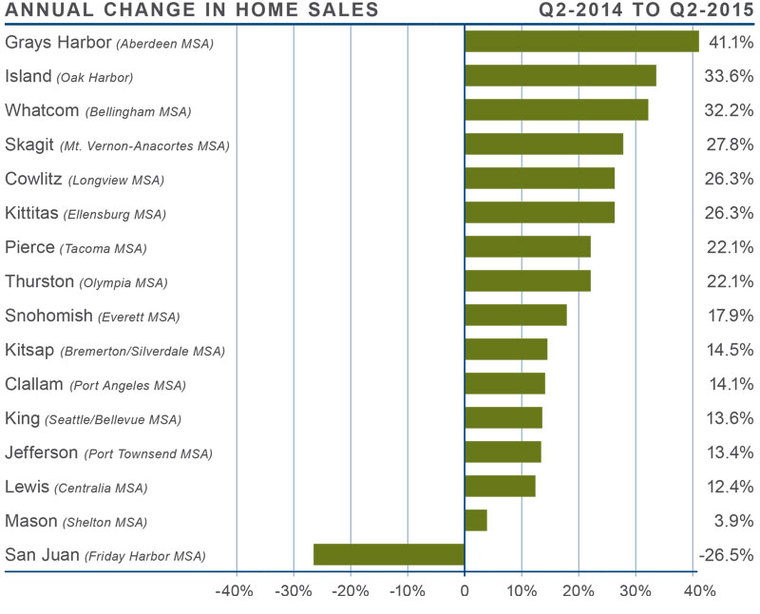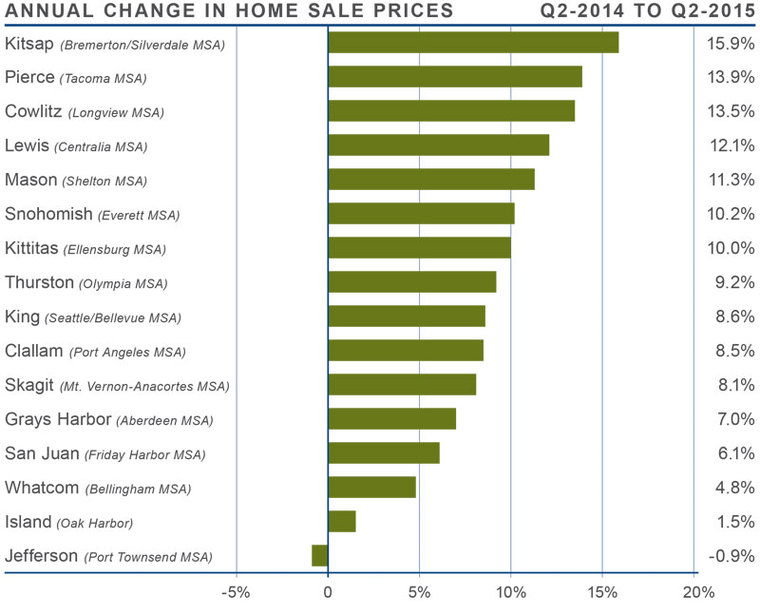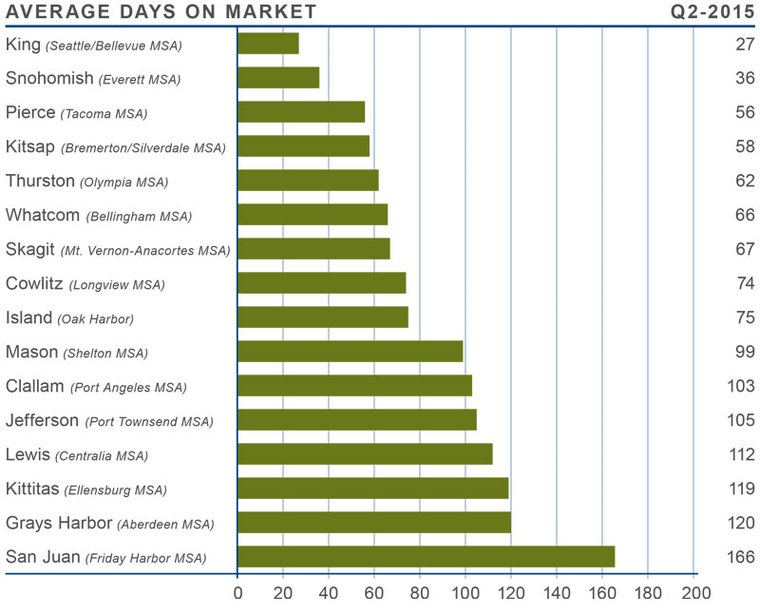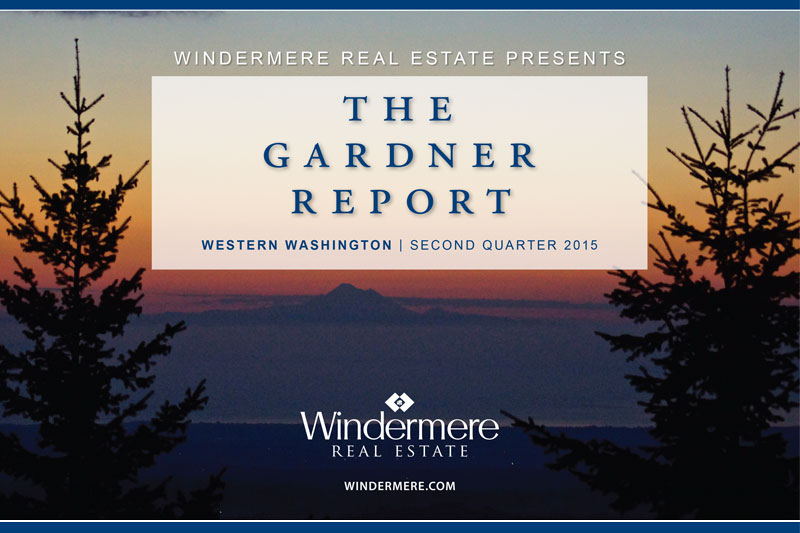ECONOMIC OVERVIEW
Our state appears to be pretty much firing on all cylinders with annual employment growth well above 100,000 and the unemployment rate trending down toward 5%. A ll in all, it’s difficult to f ind something to worry about at the moment.
HOME SALES ACTIVITY
- 21,478 home sales were reported during the second quarter of 2015, up by a substantial 17.6% when compared to the second quarter of 2014.
- Sales slowed in the volatile San Juan County but this is no cause for concern as it reflects a drop of just 26 units.
- The growth in sales was most pronounced in Grays Harbor County—a turnaround from the last report—and all but two counties saw double-digit percentage increases from the same period last year.
- A bigger concern is the continued decline in listing activity which is down by almost 20

HOME PRICES
- Prices in the region rose by an average of 8.2% year-over-year, and are 7.8% higher than seen in the first quarter of 2015.
- When compared to the second quarter of 2014, Kitsap County showed the fastest price growth with an increase of 15.9%. Doubledigit percentage gains were also seen in six other counties.
- For the second consecutive quarter, Island County was the only market where year-overyear home prices fell—but the difference was very minimal.
- I still anticipate price growth continuing to increase through the balance of the year as inventory constraints persist.

DAYS ON MARKET
- The average number of days it took to sell a home dropped by seven days when compared to the second quarter of 2014.
- It took an average of 84 days to sell a home in the second quarter of this year—down from 102 in the first quarter.
- There were just three markets where the length of time it took to sell a home did rise, but the increase was minimal and ranged from one to five days.
- Unsurprisingly, the average time it took to sell a house in King County dropped below one month to 27 days.

 CONCLUSIONS
CONCLUSIONS
This speedometer reflects the state of the region’s housing market using housing inventory, price gains, sales velocities, interest rates, and larger economics factors. I have moved the needle a little farther in favor of seller. In as much as we have seen some improvement in the number of homes for sale over the past few months, the stock of homes for sale is still woefully low, and demand far exceeds supply.
I anticipate that we will continue to see price appreciation continue through this year at above average rates. The big question remains as to when we will see any significant increase in mortgage rates. Given current events in Europe, our mortgage markets will be looking east for direction, rather than concentrating on domestic economic data. As such, I don’t expect a rapid interest rate growth in the near-term.
In summary, the region’s housing market remains tight with little sign that we will see any significant increase in much-needed listings. This, combined with rising home prices, has some concerned that we could be heading towards another housing bubble, but the real estate market and economic climate of today are very different to those that led to the bubble in 2007. Nobody can predict what’s going to happen with 100% certainty, but given the current state of things, I don’t believe there is a risk of history repeating itself in the foreseeable future.

Matthew Gardner is the Chief Economist for Windermere Real Estate, specializing in residential market analysis, commercial/industrial market analysis, financial analysis, and land use and regional economics. He is the former Principal of Gardner Economics, and has over 25 years of professional experience both in the U.S. and U.K.
 Facebook
Facebook
 X
X
 Pinterest
Pinterest
 Copy Link
Copy Link



